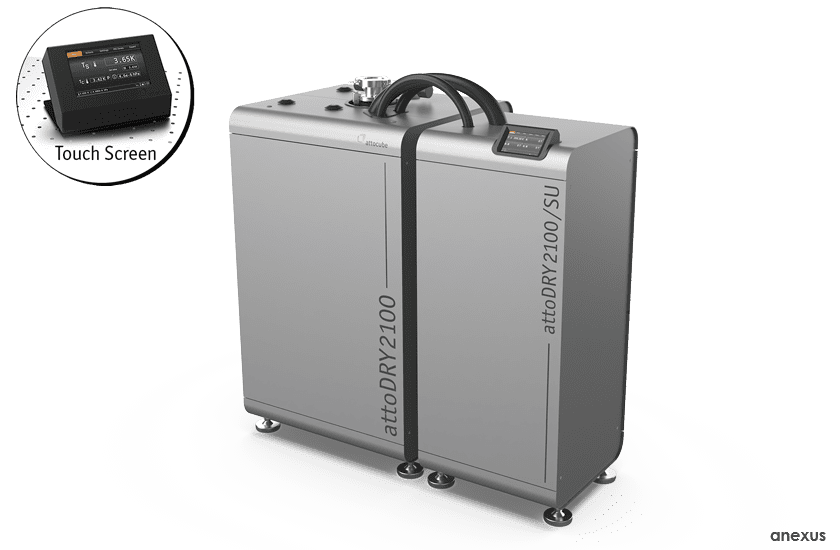

Cryogenic
Cryogenic
aNexus attoDRY2100

automated top-loading cryostat with variable temperature & superconducting magnet
Positioned at the apex of our top-loading, closed-cycle cryostats, the attoDRY2100 delivers unparalleled performance. With a continuous base temperature of 1.65 K, it offers automated temperature and magnetic field control spanning from 1.65 K to 300 K, accompanied by a selection of superconducting magnet options. This system ensures full magnetic field operation even at 300 K, maintaining exceptional temperature stability while facilitating field cooling of samples without the need for liquid helium. As such, it stands as the premier choice for variable temperature cryostats across a spectrum of low-temperature experiments, including magnetotransport measurements, confocal microscopy and spectroscopy, and scanning probe microscopy.
Equipped with an integrated touchscreen interface, the attoDRY2100 allows for convenient adjustment of desired field (B) and temperature (T) settings, eliminating the need for a PC. Furthermore, more intricate measurement schemes, such as programmable sweeps of B and T, can be effortlessly executed via a USB connection and a LabVIEW interface. The top-loading design not only facilitates swift and straightforward sample exchange but also provides ample sample space measuring 49.7 mm in diameter, ensuring versatility and ease of use for researchers.
Benefiting from unmatched cooling performance through exchange gas coupling, the attoDRY2100 boasts an impressive initial cooldown time for the complete system of approximately 15-20 hours. Moreover, the turnaround time during sample exchange is remarkably swift, typically ranging from 5-8 hours.
Notably, the closed-cycle cryostat attoDRY2100 was meticulously engineered to serve as an ultra-low vibration measurement platform for cryogenic scanning probe experiments, eliminating the reliance on liquid helium. Through a proprietary design, mechanical vibrations generated by the pulse-tube coldhead are effectively decoupled from the measurement platform. When utilized with the attoAFM I, vibration amplitudes of less than 0.15 nm RMS are routinely achieved (with a bandwidth of 200 Hz in the vertical direction).
